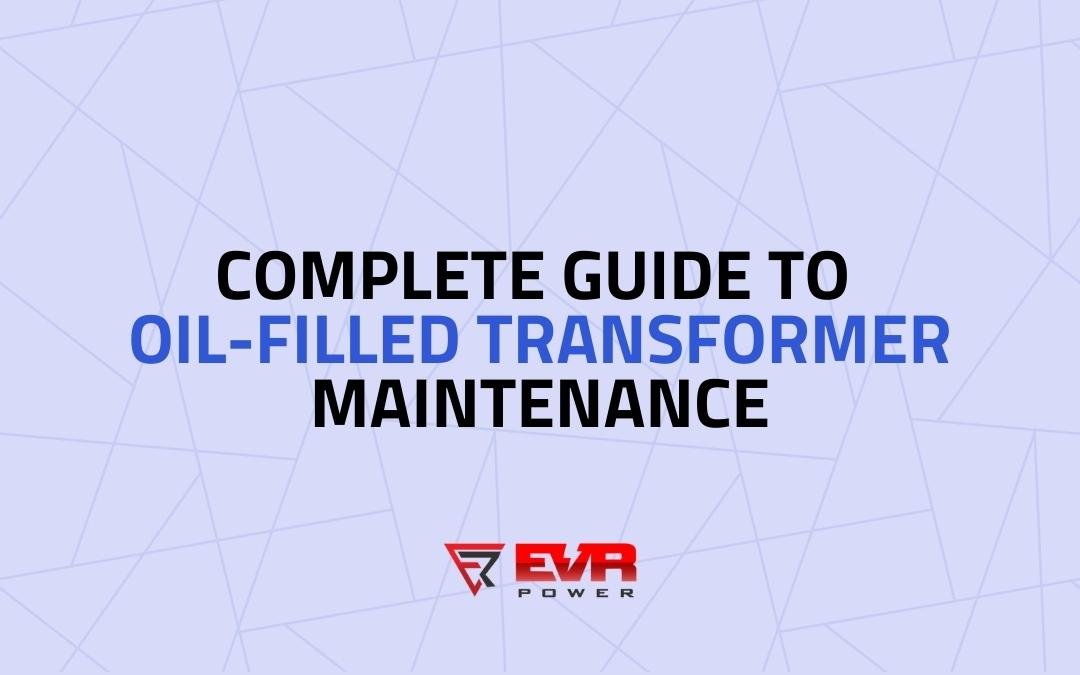Oil-filled transformers use mostly mineral oil to insulate and cool the equipment and that makes the transformers more reliable. Besides, they require regular maintenance to work effectively and have an increased lifespan. This blog covers some of the effective ways to take care of your oil-filled transformer units and scheduled maintenance strategies to have your transformer in good working conditions.
Routine Maintenance For Oil-filled Transformers
An oil-filled transformer requires various routine maintenance tasks to be performed including measurement and testing of different parameters. There are two kinds of maintenance of transformer – Routine maintenance and ad-hoc maintenance i.e., on-demand or whenever required. The regular checking and maintenance of a transformer are also known as Condition maintenance. Here we have listed separate strategies for daily, weekly, monthly, and yearly maintenance schedules with each frequency consisting of various maintenance components.
Daily maintenance
Daily maintenance of an oil-filled transformer must include oil and temperature checks. The ambient temperature, winding temperature, and oil temperatures have to be inspected to ensure they are within the normal range. See that the oil level gauge varies with temperature. In the case of a magnetic model, it has to respond to the presence of a magnet by rotating. If either of these things doesn’t happen, then it’s a clear sign that the indicator needs to be replaced.
Do a comparison of the load voltage and current with that of the rated voltage. Keeping the overcurrent, differential, and ground current relays in a good condition will prevent electrical failure.
The next thing to check is the Noise level. If your oil-filled transformer operates loudly, then it is important to know the reason for the noise. Transformer core, coils, or cooling systems – any of these can cause a higher noise level in a transformer.
Weekly and Monthly Maintenance
The next phase of routine maintenance is the weekly and monthly checks. Below are some of the tasks to be done as part of this schedule.
- Give a quick check on the oil level gauge against its oil temperature.
- Inspection of Buccholz relay for gas collection.
- Ensure that the gasket joints and radiators are tight and don’t have any oil leakage.
- Checking the transformer from the outside for any discoloration or chipped paint, etc.
- Have a check for proper sealing of any pressure relief vent devices in the transformer
- Inspection of pressure relief device for proper operations.
Yearly Maintenance of An Oil-Filled Transformer
In addition to the daily, weekly, and monthly scheduled maintenance, there are some things that need to be checked annually. This might require a technician’s assistance so feel free to call your transformer maintenance and repair professional for support.
- Inspects the cover-mounted pressure relief devices, pressure relief valve, and/or Schrader valve along with surge relay for operational efficiency and signs of damage as part of yearly maintenance.
- Check the temperature indicators and off-circuit selector in the oil-filled transformer and replace these components if needed.
- Assess the insulation resistance of the transformer’s protective relays and replace them if required.
- Inspect the fan or oil pump motors and check their resistance.
- Examine the top of the transformer device around the pressure relief tank to ensure there are no leaks.
Checklist
Here’s your Go-To checklist for transformer maintenance.
| Component | Inspection |
| Transformer oil | Inspect the oil and ensure the values are as per IS 1866 standards and use a filter if required |
| Oil conservator | Check Magnetic Oil Gauge and air cell functioning |
| Buccholz relay | Inspect gas and release if dry air |
| Gasket joints | Check and retighten leaking bolts |
- Make sure the transformer is switched off and de-energized before performing any maintenance activity.
- Listen for any abnormal high noise or vibration.
- Examine the exterior of the transformer and Clean the unit of any dirt, dust, and debris.
- Do check your oil level and temperature indicators.
- Inspect the machine’s screws, bolts, and hardware and tighten anything that has come loose.
- Check for leaks and address them immediately – if your transformer leaks often, it is better to look for a full replacement. Leaks can be due to many reasons – they can come from a bad gasket, a pin-hole leak at a weld, or any rust on the bottom of the unit.
- Switch on the transformer and run for any tests or analyses that need to be performed.
- Keep a detailed record of all the maintenance tasks performed, including who conducted them, the date, and which parts were checked.
Potential Problems With Oil-Filled Transformers
Oil-filled transformers constitute some potential operational problems. Understanding them can help prevent the breakdown before it begins. We have listed out some of the standard concerns that bother you to repairing or replacing your transformer.
Oil Leakage
Leaks can happen from gaskets, cooling radiators/fins, tanks, and various other transformer components. These leaks can be fixed if they are minor and infrequent, but more constant occurrences indicate a bigger problem.
Electrical failure
Transformer failures can be triggered by line faults and voltage spikes. Ensuring a high-quality surge protection system can prevent this from happening.
Wear and tear
Electrical components will naturally wear out and requires more care with age. So it might be best to look into upgrading your transformer. Signs of aging like poor insulation can give a clue regarding your machine’s overall condition. Moisture and humidity present in any part of the transformer can also cause oil oxidation and deterioration.
Temperature rise
It is essential to have your radiator working in a proper condition to have the optimum temperature. If a transformer’s operating temperature increases by 50 degrees F, its lifespan will shorten by half. This can happen when the insulating material starts to degrade.
Benefits of preventive maintenance of oil-filled transformer
Preventive maintenance of oil-filled transformers offers a range of benefits apart from smooth working operations.
Improved worker safety
A well-maintained transformer has few chances of causing any electrical failures or drastic events like explosions ensuring safety for the workers.
Increased lifespan
A transformer is an investment for your business. When it is well-kept following proper maintenance strategies, it can last for a longer period. This in turn avoids replacement and operational costs.
Transformer inspections
Transformer rewinding and repair work in an industry requires a high level of experience. Instead of outsourcing a technician for simple maintenance tasks, it is good to have a dedicated repair and maintenance professional on every premise. He must investigate things like oil leaks, incorrectly positioned valves, bushings, radiators, and more. Oil preservation sealing systems, Auxiliary tank sealing systems, Winding temperature thermometers, Gas pressure control components are some of the other components to be checked during the regular inspection.
Conclusion
EVR Power, the top transformer manufacturer in India has three decades of expertise in providing superior oil-filled transformer solutions to its customers. The skilled professionals provide expert guidance for periodic repairs and maintenance. Our technicians analyze the transformer’s external properties and dig deeper with an internal inspection to check for any signs of abnormal operation. They consider and evaluate the winding design, mechanical clamping, insulation systems, harmonics, core-steel, and the environment. EVR Power’s retrofit units are designed to out-perform your original units. Call us now to know more.


0 Comments